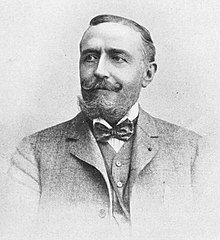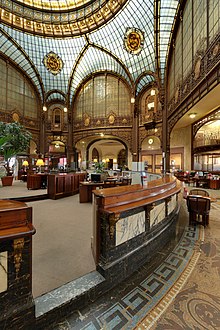| This article needs additional citations for verification. Please help improve this article by adding citations to reliable sources. Unsourced material may be challenged and removed. Find sources: "Jacques Hermant" – news · newspapers · books · scholar · JSTOR (February 2024) (Learn how and when to remove this message) |

Jacques-René Hermant (7 May 1855 in Paris, France – 5 June 1930 in France) was a French architect, one of the most renowned architects of fin-de-siècle Paris.
Biography

Jacques-René Hermant was born in Paris on 7 May 1855, the son of the architect Achille Hermant (1823–1903). Hermant attended secondary school at Lycée Bonaparte (now Lycée Condorcet). He was educated at the École des Beaux-Arts, under Joseph Auguste Émile Vaudremer.
He was a rationalist architect, but was a strong advocate for the neoromanticism style of the time, preferably the style of Louis XIII. Hermant advocated for concrete construction and erected two of the first reinforced concrete buildings in Paris, collaborating with the French engineer Edmond Coignet (1856–1915), who patented his system in 1892.
Hermant was a professor at the École des Beaux-Arts in Paris and served as chief architect for the city. He employed the Danish architect Hack Kampmann during Kampmann's stay in Paris in 1883.
Significant buildings
- French Pavilion for the World's Columbian Exposition, Chicago, 1893
- French Pavilion for the Exposition Internationale, Brussels, 1897
- La Caserne des Célestins, Paris, 1895–1901. Home of the cavalry of the French Republican Guard.
- Le Magasin des Classes Laborieuses, department store, reinforced concrete (with Coignet), Paris, 1899
- La Salle Gaveau, concert hall for the piano firm, reinforced concrete (with Coignet), Paris, 1905
- Société Générale, office building, Blvd. Haussmann, Paris, 1907
Honours
- Second Grand Prix de Rome, 1880
- Commander Légion d'honneur, 1929
References
- Who's Who in the World, 1912. International Who's Who Publishing Company. 1911. p. 594.
- ^ Ducos-Rouge, Isabelle (2003). "La « cité des centaures »: l'architecture du quartier des Célestins par Jacques Hermant, 1890–1905". Livraisons d'histoire de l'architecture. 6 (1): 47–67. doi:10.3406/lha.2003.947.
- ^ Ringrose, William H. A. (1910). Ringrose, H. (ed.). The International Blue Book (in French). International Who's Who Publishing Company. p. 611.
- ^ Thieme, Ulrich (1923). Allgemeines Lexikon der bildenden Künstler von der Antike bis zur Gegenwart: Unter Mitwirkung von etwa 400 Fachgelehrten (in German). Seemann. p. 507.
Further reading
- Balteau, J. (editor), Dictionnaire de biographie française, 1933.
- Ducos-Rouge, Isabelle (2003). "La « cité des centaures »: l'architecture du quartier des Célestins par Jacques Hermant, 1890–1905". Livraisons d'histoire de l'architecture. 6 (1): 47–67. doi:10.3406/lha.2003.947.